In France a major exhibition on Lucio Fontana centered on his idea of the future
A photograph by André Morain, dated Nov. 10, 1961, captures two of the greatest artists of the time, Lucio Fontana (Rosario, 1899 - Comabbio, 1968) and Pierre Soulages (Rodez, 1919 - Nîmes, 2022), talking to each other during the opening of a Fontana exhibition at the Iris Clert gallery. Spatialism had been born for 15 years and Fontana was also bringing his avant-garde art to France. The founder of Spatialism, a movement built by a number of Italian artists around 1948 and of which Lucio Fontana, the spearhead, was the most combative and representative, and eventually shone like a single star, could not fail to please Pierre Soulages, so much so that the artist himself owned, in his collection, a Spatial Concept by Fontana from 1968.
Now, years later, Fontana and Soulages are back in dialogue, and they do so with a major exhibition organized in the museum dedicated to the French artist, the Musée Soulages in Rodez, Occitania, where, from June 22 to November 3, 2024, the exhibition Un futuro c’è stato. Il y a bien eu un futur, an exhibition that was conceived in 2020, when Soulages was still alive (he in fact passed away on Oct. 25, 2022), to juxtapose again these two artists so different, yet linked by a poignant, close relationship between time and space. Pierre Soulages thus meets Lucio Fontana, an artist whose singularity he admires.
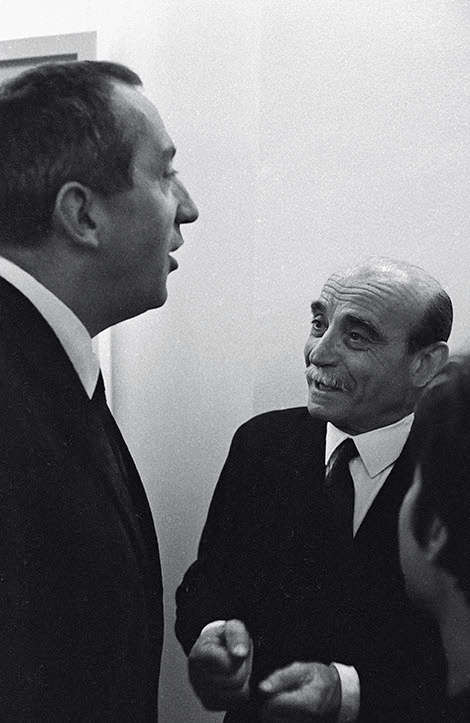
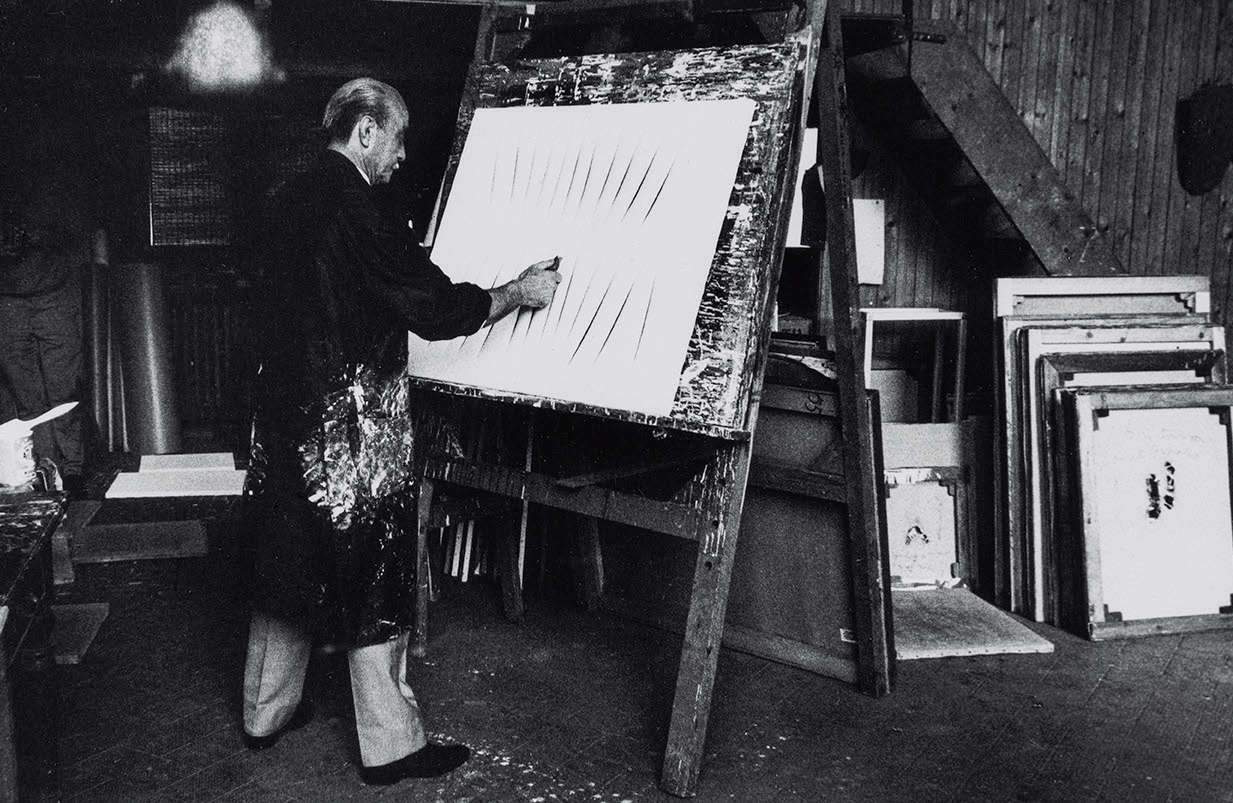
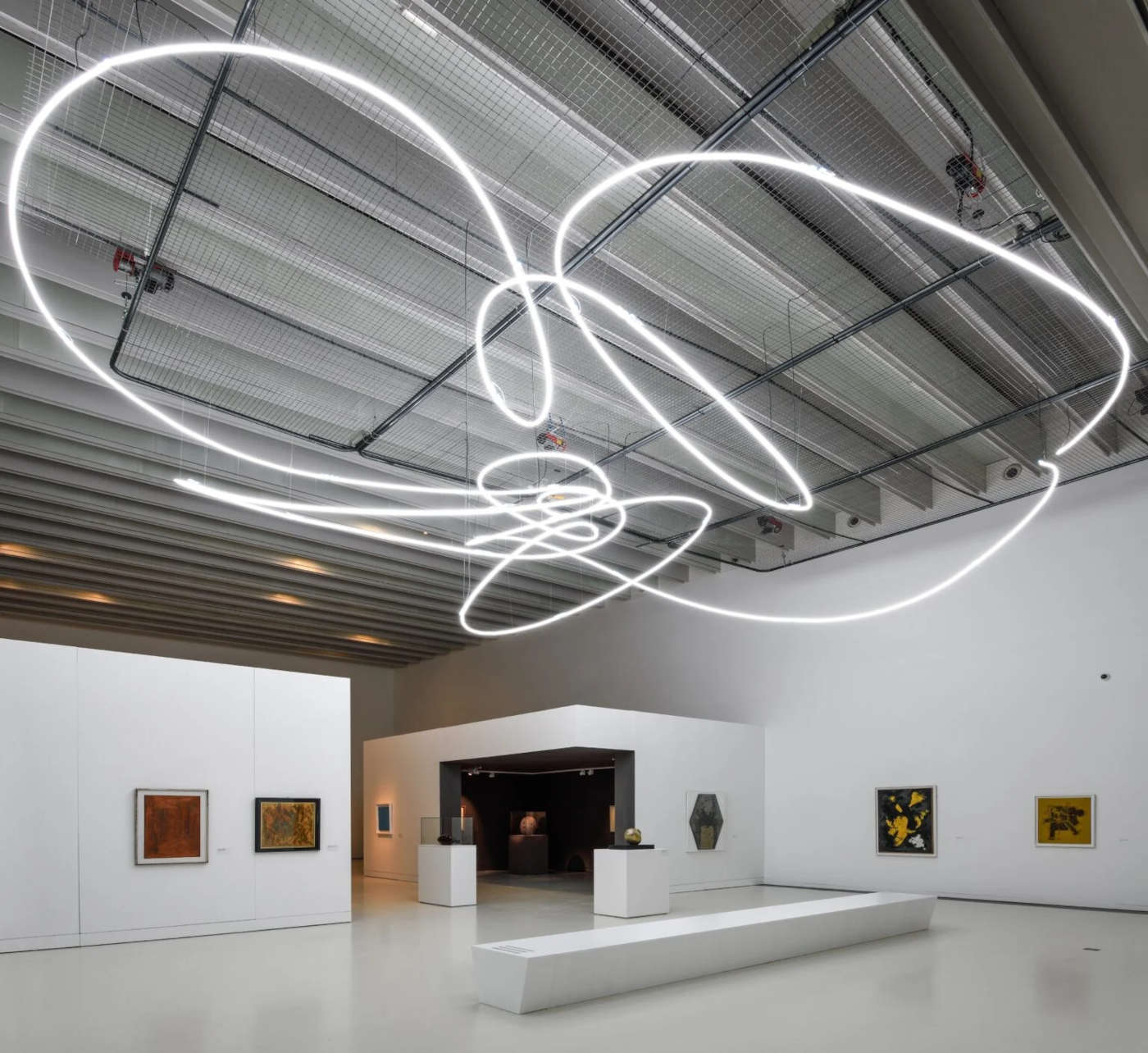
However, this is not an exhibition about the dialogue between the two (which, however, can be established between the works on display and those in the permanent collection). It should be thought of, if anything, as a broad anthology on Fontana. The one in Rodez, curated by Paolo Campiglio and Benoît Decron, is in fact the first major exhibition on Fontana in France since the retrospectives at the Musée national d’art moderne Centre Pompidou in 1987 and the Musée d’art moderne de la Ville de Paris in 2014. The exhibition is in keeping with the mission of the great Occitan museum, which has set itself the goal of periodically presenting the big names in modern art: the goal is to offer the public a journey through Fontana’s entire oeuvre, before and after the war, starting from his beginnings in Argentina and following the artist during his move to Italy and then continuing until the end of his career, to evoke all his creative variety: paintings, papers, sculptures, ceramics and light and space installations. In the exhibition, of course, there is no shortage of Spatial Concepts, with Waiting (i.e., the famous cuts) and Holes, to get to know an artist who was both figurative and informal, classical and avant-garde. In addition, the exhibition provides an opportunity to present two Spatial Environments in the Musée Soulages’ temporary exhibition hall, that of the neon curved lines, or arabesques from the Ninth Milan Triennale in 1951 (recreated especially for the exhibition) and that of the Geneva Depot Gallery, 1967 (contemporary art museum in Lyon). The idea of spatial environments had come to Fontana in 1951 when he was working in collaboration with his friend architect Luciano Baldessari and his collaborator Marcello Grisotti: neon was born at the time, an industrial medium, a source of light that acts emotionally on the viewer in another space and became an indispensable means of expression for Fontana.
The exhibition, also revolves around the idea of the future according to Lucio Fontana. In his famous 1967 interview with art critic Carla Lonzi, Fontana had said, “One could talk forty years ago about the future ... not even today, what the future will be, we cannot say, however in these forty years of my activity and what I see in the art world, a future there has been, just a transformation on the end of the painting, of painting: art brought into a fact, now structural, but not in a constructive sense, structural in a philosophical sense. Art went on a concept that I had always imagined.” With this seemingly ambiguous as well as contradictory statement, the artist was alluding to the idea of a conceptual renewal of art , which through his work, having strongly believed in it, Fontana himself had anticipated, and which had actually become manifest over the course of these years in the art of the protagonists of the last generations (from Piero Manzoni to Arte Povera and conceptual art). The idea of the future, which Fontana inherits from Futurism, is that of an art finally freed from the traditional categories of painting and sculpture, increasingly immaterial as an act. As, after all, his cuts and holes demonstrate.
It is precisely from what Fontana said to Carla Lonzi that the idea for the exhibition was born, as curator Paolo Campiglio explains. Fontana’s was “a prophecy that seemed to have come true among the artists of the last generations, protagonists of the neo-avant-gardes, now freed from the prejudices linked to the genres of painting or sculpture, attracted by the new technologies and industrial materials offered by contemporaneity. society. As Yves Klein and Piero Manzoni, Fontana’s two young traveling companions who had died prematurely, had shown, art could now prescind from all material implications to become pure mental and spiritual acts. In 1967 Fontana could also see that the conquest of space was effective in international programs, with the first launches of manned flights and the first real images sent back to Earth of this cosmic infinity hitherto only imagined or contemplated in the lenses of telescopes.”
Indeed, the society imagined by the artist in the 1940s and 1950s as a model of a future world dominated by space conquests seemed to have achieved, at least in part, its purpose with the arrival of the first astronauts in the cosmos during the 1960s. Through his art, the artist was then satisfied that he had had the insight into the eternal contradictions between the material and the immaterial, that he had worked on the idea of infinity, foreseeing that one day human beings would meet their destiny there.
It is precisely from this thought around Fontana’s art that the exhibition starts: from the concept of intuition of the future in Lucio Fontana’s work, from his operation of renewing the status of art, to present a singular path centered on the idea of dialectical oppositions between material and immaterial, on the concept of utopia that assumes a contradictory relationship, of attraction and repulsion, with respect to concrete reality. In particular, the exhibition considers, through an itinerary of more than eighty works including sculptures, works on canvas and on paper, as well as environments, the theme of the future according to three main axes of Fontana’s path, which are closely linked: Matter-Light-Color (Nature and Figure, Anti-Nature and Anti-Figure), Active Space (Environments and Theaters) and Utopia (Spatial Concepts and End of God).
The Lucio Fontana Foundation in Milan has secured the Musée Soulages partnership with important and rare loans and supported the scientific monitoring of the exhibition. The exhibition’s main partners are the Centre Pompidou - Musée National d’Arte Moderne (with 27 works on loan) and Tornabuoni Arte, which has a solid knowledge of Lucio Fontana’s work (galleries in Milan, Paris, etc.) and is now an indispensable point of reference on the artist’s work. Loans have also come for the exhibition from the Musée des Abattoirs in Toulouse, the Grenoble Museum and the Musée d’Art Contemporain in Lyon. Other loans came from institutions and foundations in France, Italy, and Switzerland: the Museo del Novecento in Milan, the Museo Novecento in Florence, and the Galleria d’Arte Moderna e Contemporanea in Turin. There are also several works from private collections, many of which are ceramics made in Albisola.
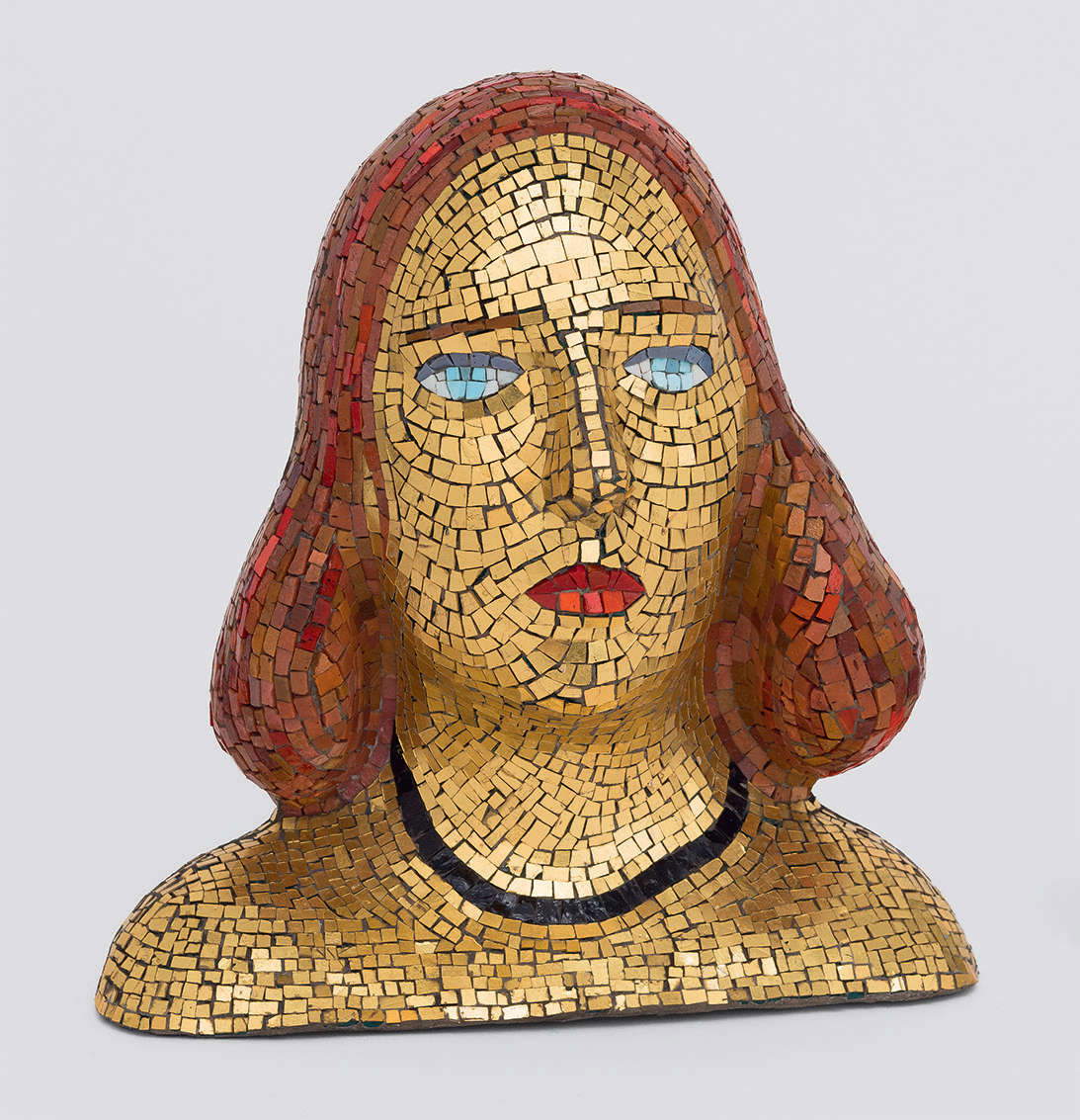
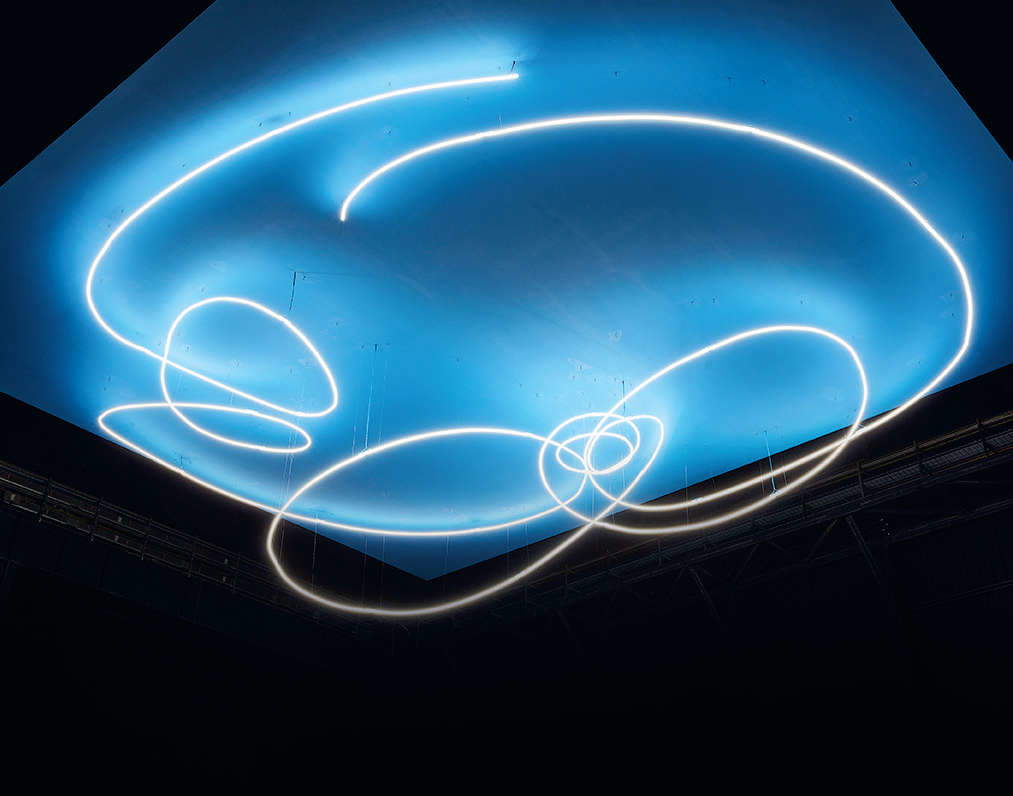
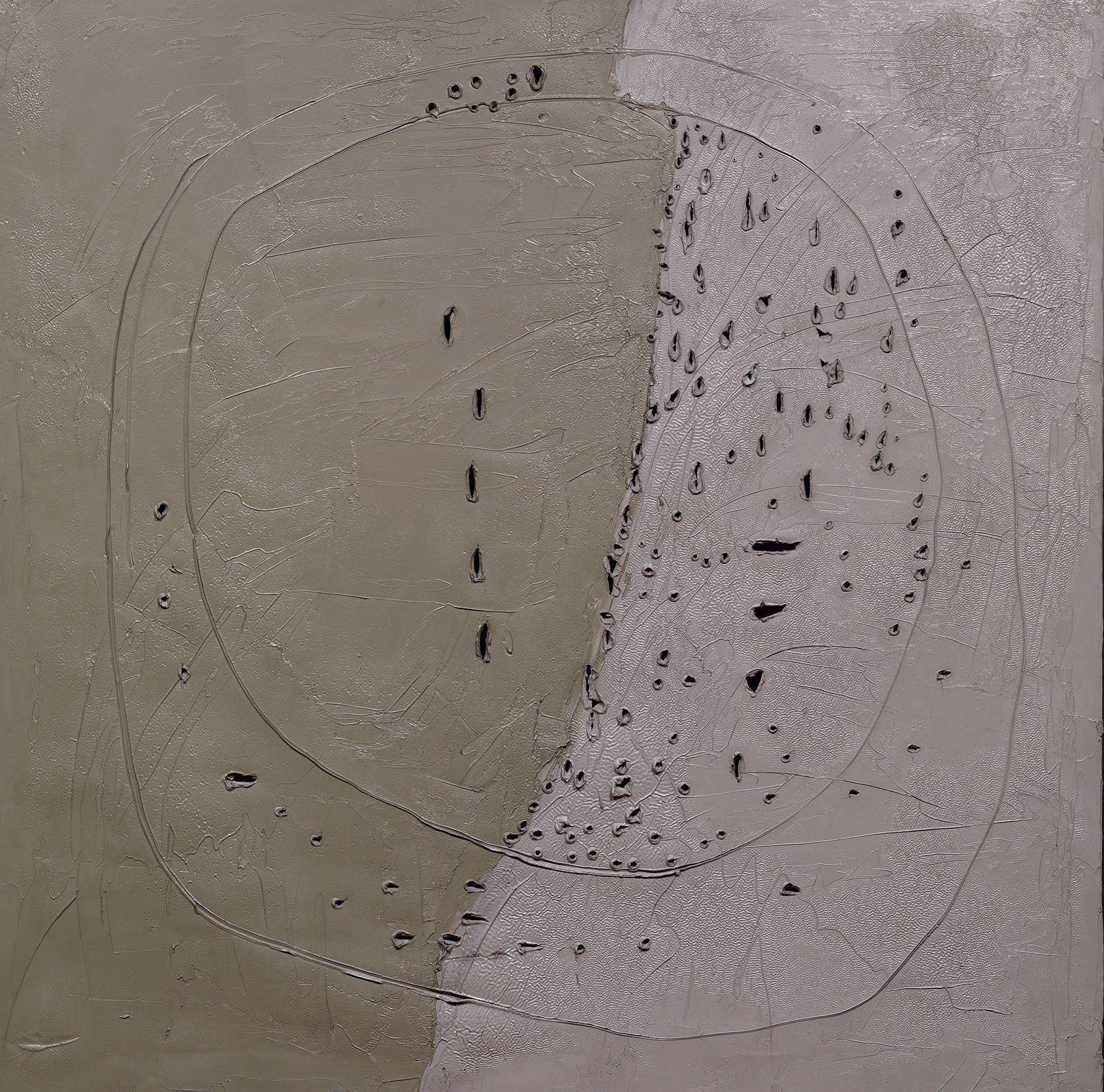
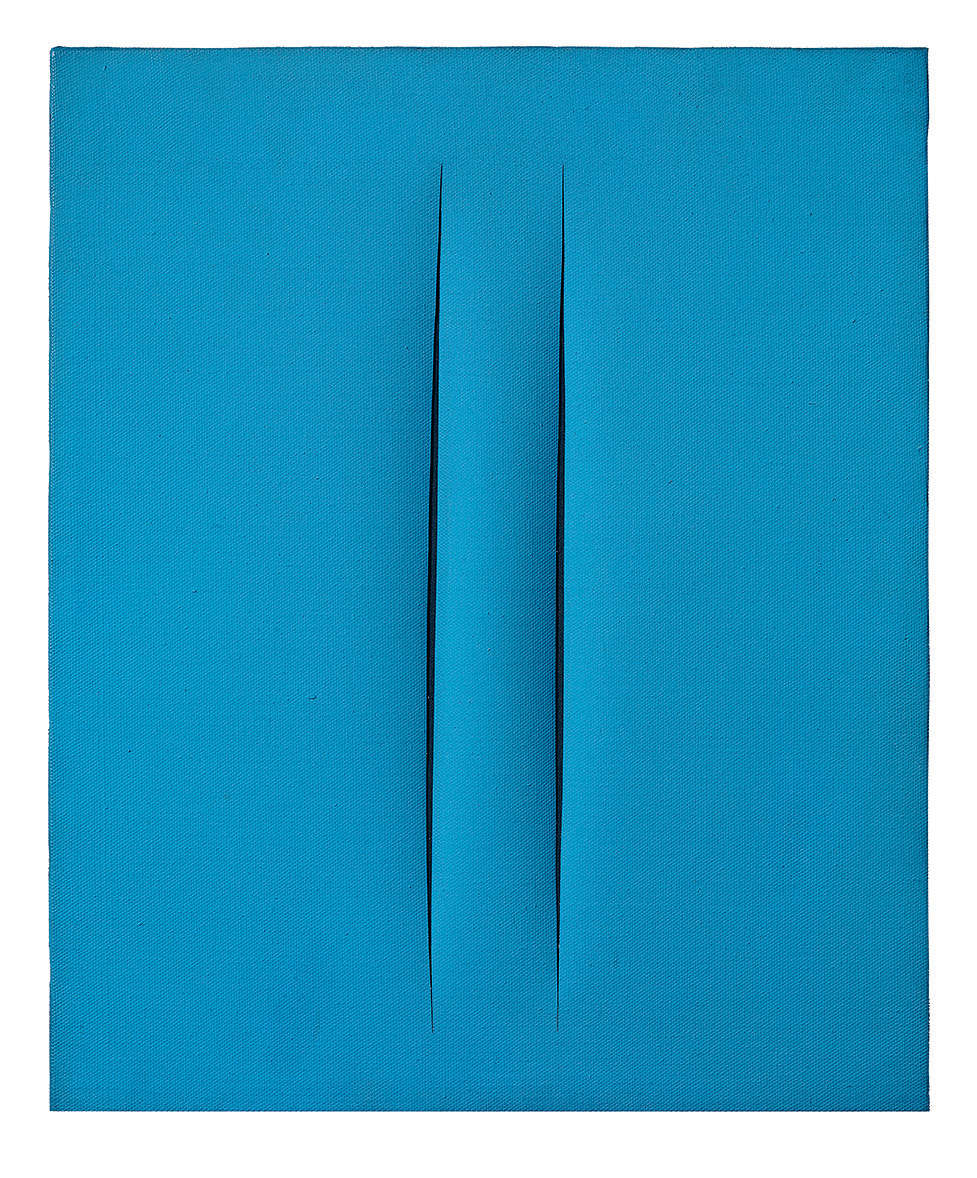

“Soulages,” says Benoît Decron, director of the Rodez museum, “loved Fontana’s work for good reasons: first, because he considered him a primordial artist of the 20th century, a multi-instrumentalist familiar to Parisian amateurs (in the galleries, particularly with Rodolphe Stadler, Iris Clert, during group exhibitions...). Fontana, a figure of the avant-garde, had his lucky French star: Paris is not that far from Milan... and then because Soulages found in the older Fontana - 20 years apart - a consistent and sustained interest in time and space, two Fontana foundations that fascinated him. If we juxtapose the works of Fontana and Soulages, we do not arrive at infallible demonstrations, but we can establish connections that may unite them. Fontana embodies spatialism, and there is no question here of returning to his definitions of theoretical texts. Of Soulages, who did not make school, the writings and statements are collected in one volume. For Fontana, the concise definition given by critic Giovanni Joppolo to qualify the artist after 1933, his known relationships with line, sign, line and space, in the light of the ceramicist’s material experience, can be summarized as follows: ’Later, the gesture in matter and the gesture in space will become the two driving forces of all his most accomplished work, and this is what spatialism means.’”
The exhibition catalog (240 pages) is bilingual, French and English, and published by Gallimard, with texts by Benoît Decron, Paolo Campiglio, Silvia Bignami, Giorgio Zanchetti, Luca Bochicchio, Valérie da Costa, Jacopo Galimberti, Daniela A. Sbaraglia.
Opening hours. September through June: Tuesday through Friday 10 a.m. to 1 p.m. and 2 to 6 p.m., Saturday and Sunday 10 a.m. to 6 p.m. July and August, daily 10 a.m. to 6 p.m. Tickets: full 12 euros, reduced for groups (at least 10 people) 10 euros, reduced 8 euros (for the disabled, members of the Amis de Musées association, CASLGR members, ticket holders of partner museums - the Musée Toulouse Lautrec in Albi, the Muséand Fabre in Montpellier, the Trésor de Conques, the Musée Ingres-Bourdelle in Montauban - membership card holders of the Collection Pinault, companions of “Petit Léonard” subscribers, Ambassadeur de l’Aveyron), free for minors, students, unemployed, minimum pension holders, journalists, group companions, Icom, Icomos, culture card holders (holders may bring a companion), staff of the museums of France, “petit Léonard” (with a paying chaperone), artists who are members of the Maison des Artistes, teachers who have a reservation for their class, staff of medical-social facilities, chaperones of visitors with disabilities, donors and supporters of the Musée Soulages.
 |
| In France a major exhibition on Lucio Fontana centered on his idea of the future |
Warning: the translation into English of the original Italian article was created using automatic tools. We undertake to review all articles, but we do not guarantee the total absence of inaccuracies in the translation due to the program. You can find the original by clicking on the ITA button. If you find any mistake,please contact us.




























